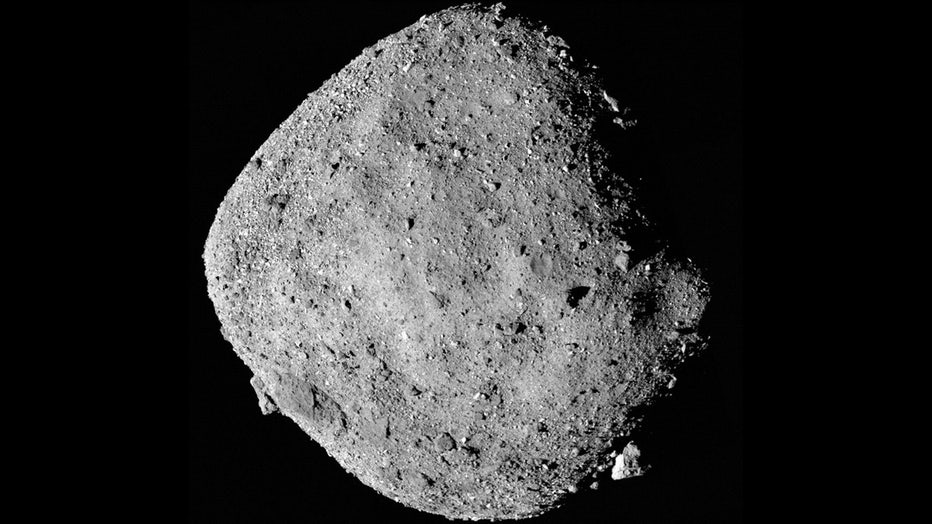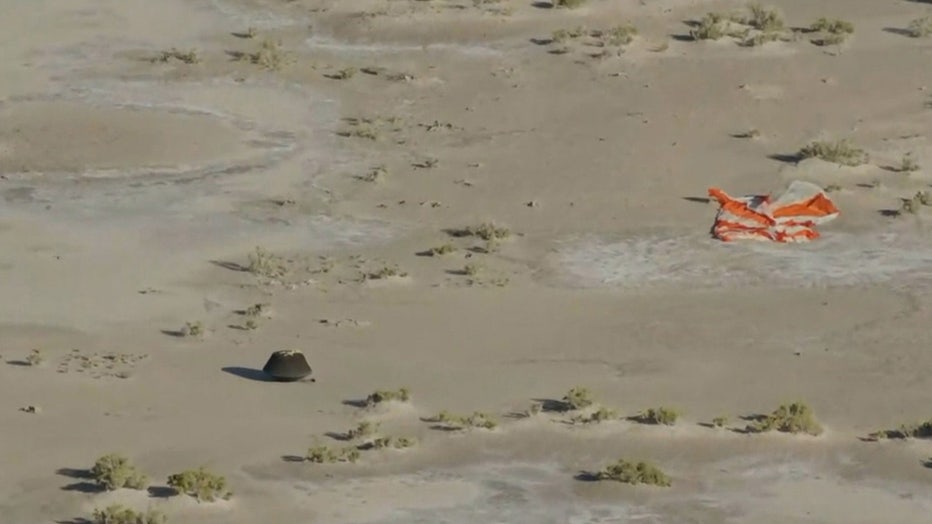NASA's returned asteroid samples reveal building blocks for life
FILE - OSIRIS-REx sample return capsule goes into the cleanroom. (NASA)
LOS ANGELES - Asteroid samples that were returned on a NASA spacecraft show the ingredients of life.
What’s more, the samples also have the salty remains of an ancient water world, scientists said on Wednesday.
Seeds of life
Big picture view:
The latest findings provide the strongest evidence that asteroids may have planted the seeds of life on Earth and that these ingredients were mingling with water almost right from the start.
Bennu

FILE This mosaic image of asteroid Bennu is composed of 12 PolyCam images collected on Dec. 2 by the OSIRIS-REx spacecraft from a range of 15 miles (24 kilometers). The image was obtained at a 50° phase angle between the spacecraft, asteroid and the
Dig deeper:
NASA’s OSIRIS-REx spacecraft returned with 4 ounces of dust and pebbles from the near-Earth asteroid Bennu in 2023.
The samples contained black grains and were dispersed to two separate research teams for study.
The sodium-rich minerals had the presence of amino acids, nitrogen in the form of ammonia and even parts of the genetic code.
NASA’s Daniel Glavin said one of the biggest surprises was the relatively high abundance of nitrogen, including ammonia. While all of the organic molecules found in the Bennu samples have been identified before in meteorites, Glavin said the ones from Bennu are valid — "real extraterrestrial organic material formed in space and not a result of contamination from Earth."

FILE - OSIRIS-REx sample return capsule on ground. (NASA)
What they're saying:
"That's the kind of environment that could have been essential to the steps that lead from elements to life," said the Smithsonian Institution’s Tim McCoy, one of the lead study authors.
"This discovery was only possible by analyzing samples that were collected directly from the asteroid then carefully preserved back on Earth," the Institute of Science Tokyo’s Yasuhito Sekine, who was not involved in the studies, said in an accompanying editorial.
Europa and Enceladus
What's next:
Most of OSIRIS-REx's $1 billion missions cache has been set aside for future analysis. Scientists stress more testing is needed to better understand the Bennu samples, as well as more asteroid and comet sample returns. China plans to launch an asteroid sample return mission this year.
Many are pushing for a mission to collect rocks and dirt from the potentially waterlogged dwarf planet Ceres in the main asteroid belt. Jupiter’s moon Europa and Saturn’s moon Enceladus also beckon as enticing water worlds. Meanwhile, NASA has core samples awaiting pickup at Mars, but their delivery is on hold while the space agency studies the quickest and cheapest way to get them here.
"Are we alone?" McCoy said. "That’s one of the questions we’re trying to answer."
The Source: Information for this article was gathered from The Associated Press and NASA. This story was reported from Los Angeles.

